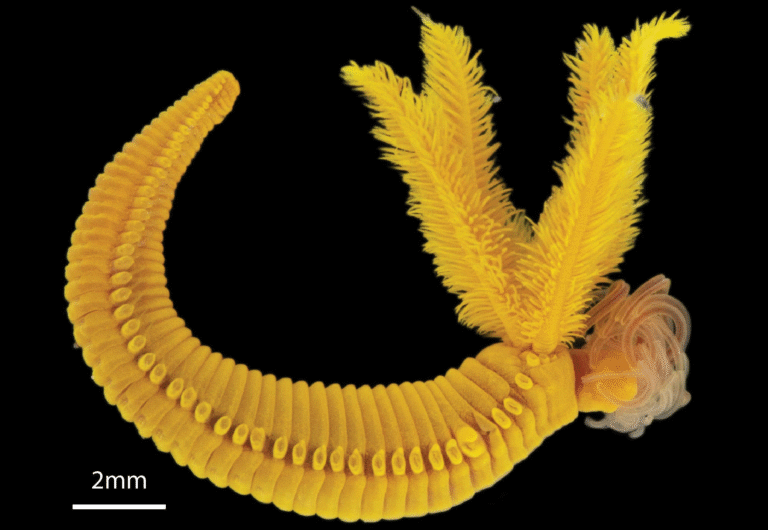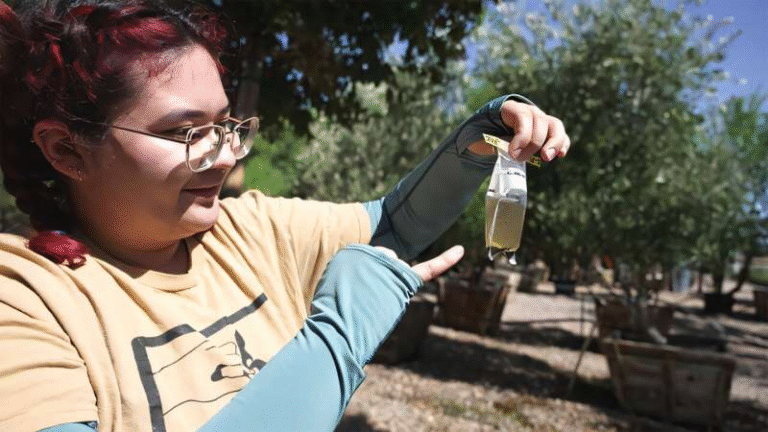Fossil Discovery Reveals a 310-Million-Year-Old Innovation in Fish Feeding

A remarkable fossil discovery has changed how scientists understand the evolution of fish. A team of researchers, including paleontologist Matt Friedman from the University of Michigan, have uncovered the earliest-known evidence of a tongue-like biting structure in fish. This adaptation, found in a species called Platysomus, dates back to around 310 million years ago during the early Pennsylvanian period.
The study, recently published in Biology Letters, reveals how this innovation marked a critical point in the evolution of feeding strategies among ray-finned fish. These findings not only provide a window into the biology of an ancient animal but also show how similar evolutionary tricks have reappeared multiple times in different fish lineages.
The Fossil Fish: Platysomus
The subject of this discovery is a genus of ancient ray-finned fish known as Platysomus. The name translates to “flat-bodied,” and indeed, the fish had a deep-bodied, flattened shape. These fish looked somewhat similar to modern angelfish, though their anatomy was far more primitive.
Platysomus belonged to the lineage of ray-finned fishes (Actinopterygii), a group that today dominates Earth’s aquatic ecosystems. Modern examples include goldfish, tuna, salmon, and cod. During the Pennsylvanian period, ray-finned fishes were experimenting with different body forms and survival strategies. Platysomus, in particular, was testing out a novel way of eating.
The Tongue-Bite Apparatus
The most significant feature identified in this fossil is a specialized biting mechanism. Instead of relying solely on its jaws, Platysomus had a plate of teeth anchored on jointed gill bones located on the floor of its mouth. This structure functioned much like a tongue, pressing upward against another tooth plate positioned on the roof of the mouth.
The result was a crushing and grinding action that allowed the fish to process hard food items, much like modern species that feed on shelled prey. This arrangement is now referred to as a tongue bite apparatus.
The lower plate was multipartite (made of several joined sections) and supported by gill skeleton elements, while the upper plate was simpler and narrower. Together, these structures gave Platysomus an efficient tool for breaking down tough food sources, expanding its dietary options.
Why This Discovery Matters
This fossil represents the earliest-known example of a tongue-bite apparatus in ray-finned fish, pushing the origin of this adaptation back by roughly 150 million years compared to what was previously thought.
The discovery is important because it shows that convergent evolution—where unrelated species independently evolve similar solutions to common problems—was at play. Multiple fish lineages, at different points in history, developed comparable tongue-bite mechanisms to deal with similar dietary challenges.
Platysomus was therefore not an evolutionary dead end but a pioneer. Its anatomical innovation set a precedent that other fish groups would rediscover millions of years later.
Fossil Preservation Challenges
Studying Platysomus is not straightforward. Because the fish had a deep, flattened body, when they died and fossilized, they often became compressed. As a result, most specimens provide only side views of the fish’s body shape, while internal structures like the gill skeletons are usually obscured.
However, the breakthrough came when Friedman and his colleagues examined an unusually three-dimensional fossil specimen preserved in the collections of a museum in the United Kingdom. This specimen provided a rare opportunity to see inside the skull without the usual crushing that distorts most fossils of this type.
By using CT scanning technology, the researchers were able to visualize the hidden skeletal structures in remarkable detail. They then compared these 3D insights with flattened fossils, using digital dissection methods to confirm that the tongue-bite apparatus was consistently present.
Interestingly, the key fossil had likely been collected more than 120 years ago and sat largely unnoticed in a museum collection until modern imaging technology made its secrets visible.
Broader Evolutionary Insights
This finding adds an important piece to the puzzle of fish evolution. It shows how gill skeleton elements, typically associated with breathing and supporting the gills, could be repurposed for feeding.
In evolutionary biology, scientists often ask how similar traits arise in different groups. The tongue-bite apparatus offers a prime example of repeated evolutionary solutions. Different ray-finned fish groups, at different times, discovered the same “trick” of turning gill bones into food-processing tools.
This also supports the concept of a “long-fuse” diversification model for ray-finned fish. Instead of rapidly evolving all their diversity right after the end-Devonian extinction event, innovations like this appeared gradually, extending over tens of millions of years.
Comparisons with Modern Fish
Although Platysomus lived hundreds of millions of years ago, it shares similarities with some modern fish. For example, bonefish (popular sport fish living in warm tropical and subtropical waters) have comparable biting plates that help them crush hard-shelled prey such as crabs.
This comparison helps demonstrate how adaptations that appeared in the distant past can still be useful today. The tongue-bite apparatus in Platysomus shows that evolutionary pathways sometimes get “rediscovered” because they offer effective solutions to ecological challenges.
Importance of Museum Collections
One of the most fascinating aspects of this discovery is that it didn’t come from a newly excavated fossil bed but from re-examining old specimens. Fossils collected more than a century ago can still reveal new insights when paired with modern tools like CT scanning and advanced digital reconstruction.
This highlights how museum collections are not just static displays of the past but active research resources. As technology continues to improve, more hidden details within long-studied fossils will likely come to light.
The Pennsylvanian World
To better understand the significance of this discovery, it helps to imagine the world of Platysomus. The early Pennsylvanian period (part of the Carboniferous, around 323–299 million years ago) was a time of lush coal-forming forests, giant insects, and diverse aquatic ecosystems.
Ray-finned fish like Platysomus were becoming more prominent, experimenting with new body shapes and feeding adaptations. This period saw an explosion of ecological experimentation as vertebrates adapted to niches in both freshwater and shallow marine environments.
The discovery of the tongue-bite apparatus shows that fish were not only diversifying in shape and size but also in the ways they captured and processed food.
How Scientists Study Fossil Fish Heads
A big part of this discovery involved looking at fossil fish heads, which contain a wealth of information. Fish skulls are highly complex, made of many interconnected bones and joints. This complexity creates opportunities for evolutionary innovations, as different connections can evolve into new functional systems.
By carefully analyzing head structures, researchers can trace how feeding mechanisms evolved and identify when certain adaptations first appeared. The Platysomus fossil provided exactly the kind of detailed internal anatomy scientists need to make these connections.
Who Was Involved in the Study
The research was a collaboration between several scientists:
- Sam Giles (University of Birmingham and Natural History Museum, London)
- Matthew Kolmann (University of Louisville)
- Matt Friedman (University of Michigan, Museum of Paleontology)
The work was supported by organizations including the U.S. National Science Foundation, the Royal Society, and the Natural Environment Research Council in the UK.
Why This Matters Beyond Paleontology
At first glance, the discovery of a fossilized feeding structure might seem like a narrow detail. But in reality, it provides insights that stretch across multiple fields:
- Evolutionary biology: It shows how organisms can repeatedly find similar solutions to ecological challenges.
- Ecology: It highlights how ancient fish may have interacted with their environments and prey.
- Paleontology methods: It demonstrates the value of combining old collections with modern imaging.
- Science communication: It reminds us that discoveries don’t always require digging new fossils—sometimes the biggest surprises are waiting in a drawer.
Final Thoughts
The discovery of a tongue-bite apparatus in Platysomus reshapes our understanding of fish evolution. It reveals that complex feeding adaptations appeared far earlier than previously known, showing how ancient ray-finned fish were already innovating in remarkable ways.
This 310-million-year-old adaptation is more than just a curious feature of a long-extinct fish. It’s a reminder of the ingenuity of evolution, the value of museum collections, and the power of modern technology to uncover secrets hidden for over a century.





